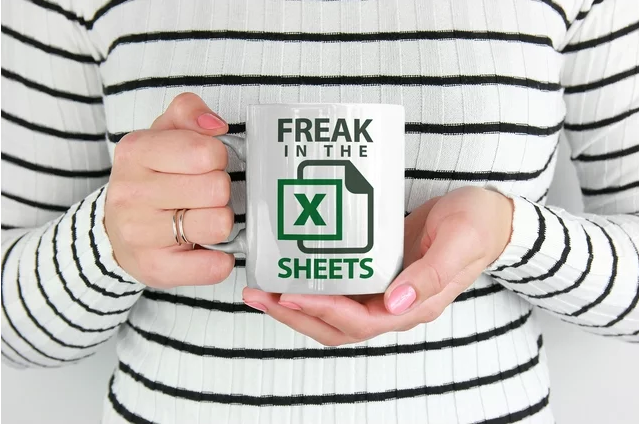A few years ago I posted about how we split our paycheque each month, and it’s a popular post and topic of conversation. So I thought I would update those figures, and also include a link to the budget template we use.
How We Budget
Our budget is essentially “the Envelope Method” of budgeting. This is a classic home economics approach to budgeting, where cash from the paypacket (I’m old enough to remember my dad being paid in cash like this) is divided up into actual envelopes for different purposes. So the household budget might have $50/week for groceries and $5/week for Christmas presents (I told you it was old).
If an envelope ran out of money, it meant you had spent too much in that category. You could borrow from another envelope, but ideally you just waiting until the next pay and until there was money in the relevant envelope again.
When my beautiful wife and I moved in together, this was the physical budget process she used! I wasn’t much of a budgeter, because I was pure tight-arse spending next to nothing, but we quickly realised a common system would be advantageous.
Combining our Finances
I’ll save the whys and hows of combining our finances for a future discussion, but as we began to merge our financial life (a mortgage is harder to escape than marriage!) we sought a system that worked for us … but also allowed us to get a return on our cash via our mortgage offset.
So I built a spreadsheet version of the envelopes:
- Every payday, actual money goes into our mortgage offset account.
- Our budget spreadsheet automatically allocates this across 18 different categories that are important to us (see below). The amounts in each category are defined at the start of the year.
- Twice a month (takes about 15 mins) we record our actual expenses against those categories. This means at any point in time we can see how much “cash” is in each “envelope”.
I’m aware that there are Apps that do this, or do something like this. (When I’ve looked, I’ve struggled to find ones that show the remaining envelope / category total. But I haven’t looked very hard, because I’m a grumpy old man who doesn’t like apps.)
When we started budgeting like this, the key was planning for infrequent (Quarterly and Annual) expenses. Things like rent/mortgage, groceries, fuel all get paid each week or so – that’s easy. But it’s also easy to just spend whatever money may be left over, instead of putting a little aside for Quarterly Rates or Electricity bills, or those pesky Christmas presents.
Once we really got on top of our budget, we were able to put money aside for multi-year expenses as well, like a sinking fund for House maintenance / renovations, or a conscious decision that we may need to buy a new (to us) car about every 8 years. If my car died tomorrow, I know I have $20,333 in an ‘envelope’ ready to buy a replacement.
How to Use the Spreadsheet
You can download a Template version of our Budget here – https://jacobaldridge.com/wp-content/uploads/2024/03/Budget-Template-Main-Sheet.xlsx
I’ll be honest – I don’t think this is a hugely useful template. It’s both personalised to our brains, and also evolved over many years so the formulas and layout may not be as neat as if it was created from scratch. I’m sharing it because people often ask, not because I think it’s glorious and I want to sell it.
The first sheet has DETAILED instructions. But the idea is:
- Build your annual Budget. Across each line item, and therefore each envelope category. Make sure your income covers your expenses.
- Set up each month so it looks right. This template includes 15 months, each in a different sheet. We used to forward plan things (like Quarterly Rates bills) but now we know there’s always enough money, so we don’t bother.
- Run each month. Record the money in, review the money in the categories (it calls them “mini accounts”), record the money out, and see how each mini account looks.
If it helps, let me know! If you want to run with this and make it easier and/or more user friendly, brilliant!! In fact, let me know and I will add a link from here to your version.
How We Split our Money Each Paycheque
This biggest change from 5 years ago is that we’ve swapped IVF for Child! We also sold our previous investment property and debt recycled our entire main residence mortgage into a new investment property (again, a discussion for another day – but that puts $10,000 a year back into our pockets).
There’s no right or wrong with how you split your money. We like Ramit Seti’s Rich Life philosophy that “A budget isn’t restrictive, it’s a document about where you choose to spend your money”. So this is where we choose to spend ours.
- Investment 5.2%
- Child 6.7%
- Beauty 0.9%
- Medical 6.1%
- Car 2.6%
- Car Buying 0.0%
[This used to be $100/week, but now we have enough saved, and may downsize our cars next year] - Clothes 0.9%
- Gifts 1.5%
- Holidays 8.2%
- House 9.3%
- Investment Property 47.8%
[This is high. Interest Rates caught us more than we expected. 1/3rd of this is debt which used to be against our primary residence but is now tax deductible.] - Groceries 6.1%
- Entertainment 2.3%
- Transport 2.4%
- Cash Reserves 0.0%
[This is a sweep account for typos or variable income months]
A Horrible Way to Live
I shared our approach on reddit recently, and the top reply was “honestly this sounds like a horrible way to live“.
The level of detail we like is not for everyone.
But I’ve had periods of my life where I was close to completely running out of money, when the money coming in was nowhere near enough to cover the money going out. And where any extra expense added enormous stress to my life.
Now THAT’S a horrible way to live.
Spending 15 mins each fortnight, and an hour over Christmas, talking money with my beautiful wife … and then continuing to live the life we choose? I’m good with that. Good luck!





